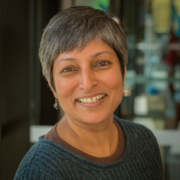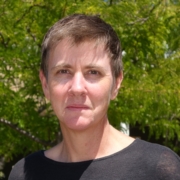Barbara Preston
Funding, Equity & Achievement in Australian Schools
Today we look at funding, equity, and achievement in Australian Schools. My guest is Barbara Preston.
Barbara Preston is an Independent Researcher based in Canberra. She’s recently authored the report “Funding, Equity and Achievement in Australian Schools,” which documents a national symposium that was convened by Jane Kenway and Fazal Rizvi earlier this year.
Citation: Preston, Barbara with Will Brehm, FreshEd, 340, podcast audio, December 11, 2023. https://freshedpodcast.com/preston/
Will Brehm 0:01
Barbara Preston, welcome to FreshEd.
Barbara Preston 1:01
Thank you, Will.
Will Brehm 1:03
It’s really great to have you on to talk about some of the issues around funding and its subsequent impact on say, achievement and equity in Australia. So, I guess to start for those who might not know too much about the Australian education system, and particularly the structure of the Australian school system.
Barbara Preston 1:21
Well, it appears pretty simple but in fact, it’s very complex. So, at the simple level, Australia has three sectors of schooling, as they are classified in government administration and data collections. So, the public system, which currently enrolls about 64% of students; a Catholic system. So that’s Catholic systemic schools, primary and secondary, and they enroll about 20% of students; and an independent sector, which enrolls about 16%. And it’s made up of some very old high fee independent schools, equivalent to the British public schools. Some of which were established in the 1830s to 1850s. And then more recently, quite a few lower fee Christian fundamentalists and other religion, independent schools, including religious ones, such as Jewish schools, Islamic schools, and other religious organizations, different sets, different specializations.
Will Brehm 2:28
That’s quite interesting. So, independent is such a wide umbrella in terms of sort of fee paying schools of different varieties, whereas Catholic schools are sort of separate from independent, but are they also fee paying?
Barbara Preston 2:40
Oh, yes. All private schools are fee paying, they receive, in some cases, extremely generous public funding, and they have autonomy. So, this contrasts very much with, say Catholic schools in other countries like England, or the Netherlands or New Zealand, where they are part of the public system and can’t charge fees, and also sort of have regulations on their enrollments and other aspects.
Will Brehm 3:09
Right. So, when we talk about private schools in Australia, we basically are talking about independent plus Catholic schools, right?
Barbara Preston 3:16
Yes. And there are Catholic schools in the independent sector. So, high fee Catholic schools, a lot of them established in the 1800s.
Will Brehm 3:26
Okay, and it gets rather complicated when there’s so many different types of schools in a way. And I guess, you know, I’m wondering two different things; one about choice. Do the students get to decide basically, where they want to go to school? And I guess some of that has to do with if they can afford the fees, of course, but so is there just sort of the students get to decide or their families get to decide where they go to school?
Barbara Preston 3:46
Yes. And it’s very much been government policy, certainly since the Second World War, but all the way through since colonial times that parental choice of education is a policy goal, which is given greater or lesser priority depending on the circumstances and the nature of the government. So, private schools can be established where there is an indication that they’ve got viability, they’ve got people who want to enroll their students there, and they meet planning and other regulations, and if they’re nonprofit, etc, they’ll qualify for government funding. So, they’re pretty free rein to establish wherever there is a desire from families to establish a private school.
Will Brehm 4:33
And so you’ve just mentioned the sort of main issue that we’re going to dig into today about whether the government actually gives funding to some of these private schools. So, in a sense, and I think this is what your report sort of showed is that in a strange way, independent and Catholic schools can get created and receive funding from the government but then, basically directly compete with public schools
Barbara Preston 4:55
Oh, yes, yes, most certainly. It’s a little bit different for the Catholic systemic schools because it’ll be the various Catholic authorities. There are also Lutheran and some other systemic schools, those systems so their governing authorities will make the decision about their new schools and their enrollment, their size etc. But the competition is a really important thing because the private schools have freedoms that the public system doesn’t have.
Will Brehm 5:29
Such as?
Barbara Preston 5:30
Well, private schools have freedom to enroll in terms of the number of students, whatever number of students they feel is appropriate. So, when you have a situation of significant enrollment fluctuation, so a new suburb is developed and has lots of families with young children who pass through primary school and then secondary school creates a large overall enrollment fluctuation. Primary schools are initially overcrowded, etc. and then underutilized resources. Then the same thing happens in secondary schools. And what you find in those suburbs is that your local Catholic and other private schools will maintain their enrollments at an optimal level, while the public schools must bear the full brunt of those enrollment fluctuations because they just must accept all comers so they can’t exclude students on the whole. There are some situations where public school students need to go to an adjacent public school in overcrowding situations, but on the whole, the private system can do that. They can also exclude students, expel students at will if they’re difficult to teach, while the public system must accept them. They can select students academically bright, musically, or sportingly, the high fliers can select who they like with scholarships and other advantages, and the public system then loses those students.
Will Brehm 7:07
Right. So, these fluctuations and the sort of poaching of students and I would imagine teachers can have all sorts of knock on effects and sort of create instability within the public sector. Whereas as you’re saying, the private sector can more or less maintain a level of stability and maybe achieve quote unquote excellence a little bit easier. But before we sort of dig into some of this in more detail, I just want to put this Australian experience in the global context, you know. So, the numbers you gave were 64% of students attend public schools, and about 36% of students attend some form of private school between independent and Catholic. How does this sort of division compare to other countries in the world?
Barbara Preston 7:48
Well, it’s the largest proportion of students in unregulated private schools after Chile, which of course had massive privatization under the Pinochet government. So, even though the OECD has a couple of school countries with larger private sectors than Australia, those private sectors are in fact integrated into the public system and fairly well regulated, such as England and the Netherlands. So, if you look at OECD, PISA, and other reports, you just have to realize that in those other countries, the private sector is in fact pretty well regulated and part of the public system.
Will Brehm 8:30
And so when you say unregulated in the Australian case, what are you sort of referring to specifically?
Barbara Preston 8:35
Well, what I mentioned before in terms of enrollment is probably the most important thing. They also have a fair bit of freedom in the detail of curriculum and pedagogy. And really important in this time of overall teacher shortage is that they can recruit teachers. And so we’re finding throughout Australia at the moment in country towns and suburbs in the city that the private schools can offer salary bonuses and other attractions to recruit teachers out of the public system so that they are fully staffed with the specialists that they need. And of course, the public schools are being depleted of those teachers. Now, a lot of these competitive impacts would not be serious if the private sector wasn’t as large but because you’ve got a pretty large private sector, it does have a very big impact on the public system.
Will Brehm 9:37
And what’s so strange in the Australian case is just sort of how much governments are funding private sector, right? I mean, it’s sort of wild to think that on the one hand, it’s an unregulated private sector, but on the other hand, they receive government funding. It just is sort of hard to keep both of those ideas in my mind at the same time. So, historically speaking, how have schools in Australia been funded? And I’m particularly interested in that sort of before the 1970s, because as your report shows things change dramatically in the 1970s. So, historically, how has schools been funded in Australia?
Barbara Preston 10:16
Okay, so in colonial times, all the different colonies, which are now the states, progressively established universally accessible for the compulsory years public schooling, free and secular from 1860s through to the 1890s. And as they did that, they ceased providing any public funding to private schools even though there continued to be a relatively large Catholic system -probably about 15 to 18% of total student population, and those elite, private, independent schools equivalent to British public schools. So, they continued on with no public funding, and then in the 50s, public funding progressively and incrementally came in for private schools. Initially, the elite independent schools got tax deductions for donations to school building funds, state governments started giving bursaries open to any students, and then after the Russian Sputnik satellite in 1957, there was a big pressure for modernization and improving schooling, particularly science technology, increasing retention to year 12, and the then conservative coalition government decided initially to make Senior Secondary scholarships open to any student at any school. And of course, they disproportionately went to the high-fee independent schools because that’s where the high income, more academically high achieving students were. And then they started providing money for science laboratories and libraries. Again, on a system that appeared equitable but in fact advantaged the high fee schools because it was on a matching grant basis. So, if a school could raise $70 million, the Commonwealth would provide a matching grant. And then around 1970, they brought in equal per capita, so per student grants to all students in private schools to gradually increase to 20% of the cost of educating a student in a public school. And that was initially to be the maximum. Same amount whether it’s a poor Catholic parish school in a disadvantaged area or a high fee, independent school, they were all just getting 20% of the cost of educating a student in an average public school.
Will Brehm 12:57
And these funds were coming from the Commonwealth, the federal government?
Barbara Preston 13:02
The Commonwealth, yes. There was also some funding from state governments, and they were state government scholarships, or what were called bursaries, which were often generally means-tested.
Will Brehm 13:14
And then the Whitlam government comes into power and things start to change away from this equal per capita recurrent grants as you were just explaining. What happened in the 1970s to start changing this funding system?
Barbara Preston 13:31
Well, after the conservative coalition government had been in power since around 1950 -so, it’s been 23 years- a social democratic Labour government was elected. And it was in a time of great progressive movements around the world -1973. It was also a time when economic growth meant that Commonwealth governments could have a lot of money to spend and the Whitlam government had a big reformist agenda, a progressive reformist agenda. So, improving the situation in outer suburbs, bringing in a universal health scheme funding for the arts, and a lot of funding for schools, but they wanted to do it on a needs basis because of the social democratic philosophy. And needs essentially the socio economic background of the school’s clientele, which is measured in many, many different ways over the years. But that’s the fundamental principle. So, disadvantaged students, disadvantaged schools get higher levels of Commonwealth funding, federal funding, than say the high fee independent schools.
Will Brehm 14:45
But the Commonwealth would still fund all the different types of schools?
Barbara Preston 14:51
Well, the Australian Senate at that time was dominated by conservative parties and the Catholic Bishops even though they were responsible for mostly disadvantaged Catholic parish schools formed an alliance with the independent sector to get the high fee schools funding restored. And so that basically set up the system that is continued till today with this needs-based funding based on what is usually supposed to be a socioeconomic background basis for students at particular schools, which is always a little bit easy to fiddle and easy to game. So the system gets changed every few years, and a new change is currently being brought in. And then of course, the systems often have processing needs have questionable validity in terms of are they really measuring need. So, you’ve got that with increasing levels of funding. So, even though it started out with high fee schools getting a relatively small amount of public funding and the poorest, most disadvantaged schools getting a larger amount, but still well below what public schools were receiving, over the decades since the funding for private schools at all levels has just progressively increased?
Will Brehm 16:32
So, what does it look like today, then?
Barbara Preston 16:34
Well, today from both public and private sources, over average, public schools receive less per student than both Catholic and independent schools. So, in 2020, the total average income from all sources -so that’s government direct funding, but also government funding through tax deductions, etc, which really should be counted, as well as fees and donations- was for independent schools, more than $24,000. For Catholic schools, almost $18,000. And for public schools, just $16,000. Even though the public schools have the largest proportion of disadvantaged students.
Will Brehm 17:25
So, there’s obviously big differences between the different types of schools, public being at the bottom. How do we start accounting for the differences here? Like when you actually look at the numbers and where the money is coming from, how do we understand why they’re so different?
Barbara Preston 17:39
I think there are a couple of really important things. And it’s basically to do with a federal structure of Australian schooling and political power and influence. So, the federal structure means that the Commonwealth largely funds private schools, and the Commonwealth has much greater capacity for fiscal largesse. So, just to put political pressure on the Commonwealth will get it to fund something. On the other hand, the states are quite financially constrained. So, they will be doing whatever they can not to spend too much on any sector, whether it’s health or police or public schooling. And the other thing is the political power of the private sector. So, both the Catholic and the independent sectors and the other smaller sectors, they have a singular clientele and a singular group that they’re advocating for, and a politically strong clientele. Public schools organized and managed by the states and the state governments, of course, are responsible to all people in the state, including those who are associated with private schools. So, the state governments can’t do the advocacy work for public schooling that the private sectors can do for their schools. So, that combination of things just leaves the public system at a disadvantage. And then, of course, those advantages that go to the private sector because of the autonomy, the lack of constraints.
Will Brehm 19:12
So, does this particular funding model and this sort of political economy that you’ve just laid out; what impact does that have on the students who attend the different types of school?
Barbara Preston 19:21
So, what’s been happening since the 1970s is that advantaged students -so students from high socio economic families- have increasingly been concentrated in private schools, both Catholic and independent. And disadvantaged students concentrated in public schools. And it has an outcome for society as a whole and leadership and political power. So, thinking about students in the very -so, the top 12% family income range- back in the mid 70s, 64% of students in that really top family income range were in public schools. And so leaders of corporations, science and technology and knowledge and politics and other fields were predominantly coming out of public schools. While in 2021 only 31% of students in that top family income range, top 12%, attended public schools. So, more than two thirds were in private schools, both independent and Catholic. And so that’s where the general leaders were coming from.
Will Brehm 20:34
So, we see a very clear sort of segregation along socioeconomic status. Do we see other sorts of factors that we can see segregation like religion? I also think about the Aboriginal population. Do we have data on where these different groups are sending children to school?
Barbara Preston 20:52
The Aboriginal population, it’s fairly mixed. In the remote communities, there are quite a few, both independent and Catholic, small indigenous schools, some of them quite locally controlled. But in the country towns with large, very disadvantaged indigenous populations in those towns, the indigenous students overwhelmingly attend the local public schools and say, not a local Catholic school. But other areas of social segregation, say by religion, say Jewish students and Islamic students are important in this time of conflict in Gaza, etc. But of all Jewish students, more than 60% attend independent schools mostly exclusively, or largely Jewish schools -schools classified as Jewish schools. And then of high SES second secondary students, 80% of Jewish students attend Jewish schools. And so therefore not mixing with the general community, and similarly, Catholic students, the higher SES students, almost 65% of high SES Catholic students attend Catholic schools. And for Islamic secondary students, high SES almost 40% attend independent Islamic schools. So, you are getting that social segregation, which has really important implications for social coherence.
Will Brehm 22:28
Absolutely. Social coherence, social cohesion. I can see how segregating students along different schools, and then sort of how it intersects with the socioeconomic divisions and how that sort of exacerbates some of these differences in segregation is really important. What do we know about student achievement when it comes to segregating students into all these different types of schools based on their religion, based on their class, based on their sort of Aboriginal heritage in certain locations? Do we know anything about the sort of student performance?
Barbara Preston 23:01
Well, certainly student performance in schools that are predominantly disadvantaged students. So, if the peer cohort is very disadvantaged, and not achieving well enough academically, a particular student will do worse academically in such a school than in a more comprehensive school. And also there’s now some evidence -again fairly mixed- but in very academically advantaged, or academically selective schools, students don’t do as well as they would in raising equivalently well-resourced comprehensive schools.
Will Brehm 23:40
Okay. So, there’s issues around student performance, issues around social cohesion because of this particular funding model that we’ve now articulated. What about impacts on the teaching force?
Barbara Preston 23:55
I think I mentioned before the way in which the private sector is free to recruit school teachers as they wish and provide incentives. And also overwhelmingly recent graduates are employed in public schools. And so public schools bear the brunt of that costs of that initial induction. So, even if somebody is developing into a really effective, brilliant teacher, it still costs money to give them a reduced teaching load for their mentors and supervisors, and the other costs that schools have in recruiting and developing beginning teachers. And then once they’ve achieved a standard of proficiency and their becoming very effective teachers very often they are then recruited into the private sector. And one of the things that I think needs to be done is the Commonwealth should be covering those costs for the induction and development of early career teachers, even if they’re in the private sector, but at the moment, they’re overwhelmingly in the public sector.
Will Brehm 25:05
It’s quite amazing that the public sector is basically the ones preparing all of these teachers who then get poached -the good ones then get poached- by these other sectors who had no costs associated with getting these teachers to a higher quality, which then further sort of disadvantages the types of students who go to these different schools.
Barbara Preston 25:24
I mean, certainly quite a few Catholic schools and independent schools will recruit high achieving student teachers as beginning teachers, but in terms of the overall numbers of recent graduates overwhelmingly, and disproportionately they go into the public system.
Will Brehm 25:41
What’s so fascinating is that the picture you’re painting here is almost of continuity, in many ways, from that long history from colonial times. There was this slight change, maybe in the 1970s, under a social democratic government, but really, for whatever reason, the powers that be have maintained a level of inequality across the different types of schools in Australia, even to this day.
Barbara Preston 26:05
Yes. And I think that it’s hard to say, but I think the opportunity would have been there in the 1970s to do it differently. To actually bring in at least an integration model, as had occurred in the United Kingdom 1944, I think, or certainly England, and in the Netherlands a few decades before and was being considered, and then was implemented a few years later in New Zealand of integrating the Catholic schools and any other schools that accepted integration into the public system, and then constraining them from all of these competitive relationships that have been so damaging to public education in Australia.
Will Brehm 26:47
Looking back at what could have been with 2020 hindsight is one thing. What would you say can be done to try and make the system a bit more fair today? Given the politics today, what would you recommend?
Barbara Preston 27:01
Well, the first thing is to increase public funding to what is the broadly agreed level of funding for public schools so that they at least get the agreed share of resources from the Commonwealth government. From the Commonwealth to recognize vertical fiscal imbalance and the difficulties that states have and increase their share of funding. But also for the Commonwealth, as I said, to fund things like the initial induction and preparation of early career teachers, just to fund that across the board. Commonwealth also to provide special support for schools that accept students excluded from other schools. Again that could be across the sectors but particularly for the public sector, and also to provide funding for schools that bear the detrimental impact of overall enrollment fluctuations just to make sure there’s full funding there because I don’t think with the political power of the private sectors, there would be possibilities for greater restraint and regulation of the private sectors in terms of enrollments or teacher recruitment, etc. So, the interventions got to be happening to support the public sector.
Will Brehm 28:21
So, in a way, it’s to not be sector blind. To actually recognize that there’s differences.
Barbara Preston 28:27
Yes, exactly. Exactly.
Will Brehm 28:30
Well, Barbara Preston, thank you so much for joining FreshEd. And just for such a nice, sort of in depth study on Australian schools to try and understand this, what I keep calling the political economy here, because that’s really what I think you have done. So, thank you so much for joining FreshEd.
Barbara Preston 28:46
It’s been a pleasure. Thanks, Will.
Want to help translate this show? Please contact info@freshedpodcast.com
Related Author Publications/Projects
Funding, equity and achievement in Australian schools
Reforming replacement teaching
Destination of initial teacher education graduates
The Australian School teaching Workforce
Recommended Resources
Australian schools: Participation and funding 1901-2000
Schools funding and the public/private problem: 1997 and after
Australia’s school funding system
The state of school funding in Australia 2017
Review of funding for schooling (Gonski Review)
The Gonski Review and the schooling resource standard
School funding and the shifting meanings of ‘the public’ in Australian education
An examination of government funding, school sectors, and student achievement
Australia: Private schools and public policy
Government funding in Australian independent schools
The narrative of a VET workforce shortage in Australia
Inequalities in the private funding of public schools
Australian federalism and school funding arrangements
Catholic schools and the Australian educational context
PISA Australia – excellence and equity?
Private funding in Australia schools: A problem of equity
Early career teacher attrition in Australia
The recruitment, support, retention and attrition of teachers in Australia
Have any useful resources related to this show? Please send them to info@freshedpodcast.com









